- Aim for the wide side. This might be an obvious point, but you want to make sure you are giving yourself the biggest possible target when aiming down the fairway. Most golfers automatically aim down the middle in order to allow for room on both sides, but that might not be the best choice for your game. For instance, if you always curve the ball from left to right, you should be playing your shots down the left edge to allow the ball to turn back into the center. Also, you need to pay attention to how the hole is going to turn toward the green (if there is a dogleg in play). By aiming for the wide side of the fairway, you can give yourself as much room to work with as possible – even if that does mean setting up a slightly longer approach shot.
- Don't try to smash it. This is certainly a point that Fred Funk understands perfectly, but it is one that is sadly lost on the average golfer. When you stand on the tee, your primary focus should be on hitting the short grass – not hitting the ball as absolutely far as possible. If you are only thinking about distance while standing on the tee, you are never going to live up to your potential in terms of accuracy. Forget about how far you can hit the ball and focus only on making a balanced, smooth swing that is going to lead to you placing the ball right in the middle of the fairway.. It might be hard to get out of the habit of hitting the ball as hard as possible on each drive, but it is worth it in the end when you rarely have to deal with bad lies in the rough.
- Visualization. Many golfers suffer from a simple lack of confidence or belief on the tee. Instead of standing over your shot picturing all of the bad places that the ball could go, take a deep breath and imagine lacing your drive right down the middle. Picture the flight of the ball in detail, even 'seeing' in your mind how it is going to bounce and roll when it lands. Visualization is an incredibly powerful tool, and you may be amazed to find just how quickly your accuracy can improve when you start to visualize all of your drives.
- Club selection. There is no substitute for picking the right club when hitting your tee shots. Sure, you are going to hit your driver on plenty of occasions, but you are also going to want to reach for your three wood, hybrid clubs, and even long irons from time to time as well. You should always allow the design of the course to dictate exactly how you are going to attack each hole. Don't force yourself to hit driver on holes that don't really call for it – you are only going to put yourself in trouble more often than not. Hit the smart club at all times, even if that means laying back in the fairway short of your playing competitors.
- Rock your shoulders. Your hands and wrists should not be involved in the putting stroke at all. Using too much hand action in the putting stroke is a classic amateur mistake, so work on performing the putting stroke with only your shoulders while everything else stays quiet. This is one of the best ways to keep your stroke simple as you will only have to think about one moving part – as long as your shoulders are rocking and everything else is staying still, you should be on the right track.
- Hit your putts straight. This might sound a little weird at first, but it makes a lot of sense once you think it through. One of the complex parts of putting is trying to figure out the break that the ball is going to take between the putter and the hole. Of course, there is nothing you can do about that – golf courses aren't going to flatten out their greens anytime soon. However, you can separate out the process of reading the green from the actual stroke that you make. Once you read your putt, you should aim at a spot that you think will properly account for that read. Then, from there, you are going to treat all your putts as straight putts. In other words, you are going to make the same stroke each time, rather than trying to 'steer' the ball toward the hole. Trust your stroke, repeat it time after time, and keep it as simple as you can.
- Get as close to the hole as possible. This is a piece of advice that comes directly from Mr. Crenshaw himself, and it is brilliant in its simplicity. Think about what is normally on your mind when you are putting – what is it that is running through your head? Most likely, you are thinking about a number of different things, including the technical aspects of your stroke and the read that you picked out for the putt. When you strip that away, however, you get down to the basic goal of putting – to put the ball as close to the hole as possible. You are never going to make all of your putts, so it makes sense to focus instead on getting as close as you can time after time. As long as you are always focused on rolling the ball up close to the cup, you should see more than your fair share drop in as the rounds go by.
- Club head moving from left to right. If you were looking directly down the target line from behind, the club head would need to be moving from left to right through the hitting area. Said another way, the club head should be gradually getting farther away from your body as you swing through the shot. This is a requirement for the production of a draw, as swinging from left to right is going to produce right to left spin which will curve the ball as it flies. Golf is a game of spin, and controlling the path of the club head through impact is how you dictate the spin that is placed on the ball. Even if you are someone who usually produces a fade, you should be able to create a low draw by following the steps that will be provided in the next section.
- Club face closed relative to the swing path. In addition to swinging from inside out through impact, you also need to be sure that the club face is closed at impact. 'Closed' means that the face of the club is pointed to the left of the path that you are using for your swing. It is the combination of a closed face and an inside out path which will create the draw spin you need. A slightly closed clubface is going to produce a slight draw, while a dramatically closed face is going to cause the ball to turn hard from right to left (a hook). Since the club moves through the hitting area too quickly for you to manually control the position of the club face, you have to get it in the right position by using solid fundamentals earlier in the swing. Players who attempt to use their hands to control the face at the last moment before impact will always be destined to fail.
- Shallow angle of attack. If you want to hit the ball high in the air, especially with your irons, you need to hit down steeply into impact. So, what should you do when you want to hit a low shot, such as this running draw? Just the opposite, of course. Rather than hitting down on the ball, you are going to hit the ball using a shallow angle of attack. With the club coming in on a shallow path, you will minimize the amount of backspin that is created, keeping the ball closer to the ground as it turns from right to left. In the end, you will have a shot that flies low, takes a big bounce forward when it lands, and continues to run out – hopefully in the direction of your target.
- Select your most-lofted club. This is the easiest part of the process, because it will only take a second to pick out your most-lofted club from the bag. Since you want this shot to land softly on the green, it is crucial that you use the club which will move the ball highest up into the air. For most golfers, this will be a wedge somewhere in the range of 58* – 60*. If you don't have a wedge with this much loft, consider adding one to your set sometime soon in order to make this type of shot easier to handle.
- Play the ball in the middle of your stance. The middle of the stance is the best place for the ball on this shot because it gives you the best of both worlds. If you were to play the ball much behind center in your stance, you would inevitably hit down too aggressively – causing the ball to come out low, and the shot to run past the cup. On the other hand, moving the ball up in your stance will create problems with the rough. The club head will likely get caught up in some of the rough as you swing, and you may not be able to make clean contact. By keeping the ball nicely in the middle of your stance, you can avoid all of these problems and give yourself the best possible chance to carve the ball cleanly out of the grass.
- Open your stance. This is a point that many players miss, but it is important if you hope to get the ball quickly up and out of the rough. When you play from an open stance, you are going to be encouraging the club to swing on an outside-in path. While that would be a bad thing in your full swing, it is exactly what you want to do when chipping the ball. The outside-in swing will help the club to cut under the ball at impact, and you will usually find that the ball gets quickly up into the air with this technique. To execute this style of chip shot, simply open your stance to the target line and then swing the club down along the line that has been created by your feet. When done correctly, you might be surprised to find how easy it is to lob the ball out of the rough.
- Open the face of the club. In addition to using your most lofted club, you also want to open the face of that club at address in order to add even more loft. If you watch the video of Tom Watson holing out his famous chip shot, you can see that he set the face of his wedge open at address in order to achieve the loft needed to allow the ball to land softly. The amount that you are going to open the face depends on your own personal preference as well as the shot at hand, so this is a variable that you will need to practice in order to get comfortable and confident. In addition to offering extra loft, opening the face of your wedge will expose the leading edge to the grass on the way through the shot. That edge will act like a knife as it cuts through the grass on the downswing, making it easier for you to hit the shot solidly.
- Set your weight into your left side. The last thing you need to do before hitting this shot is to set your weight into your left side in order to promote a slightly downward hit. Even though you want the ball to get airborne as quickly as possible, you still want to hit down on this shot at impact. Remember, it is the loft of the club that is going to cause the ball to get up in the air, and that loft doesn't need any help from you in the form of hitting up on the shot. Lean slightly to the left as you address the ball, and keep your weight there throughout the swing.
- The setting. First and foremost, you have to have a need for the flop shot in the first place. Generally speaking, the need for the flop shot will arise when you are faced with a short sided situation on a course with firm greens. Being 'short sided' means that the hole has been cut close to the edge of green on the same side that you have missed. In other words, you have very little green to work with, and you would have trouble stopping the ball close to the hole if you were to play a regular chip shot. Often, a short side situation that requires a flop shot will be made more difficult by the presence of a bunker between your ball and the hole. In that case, you obviously can't bounce the ball onto the green, so you are forced to go high in the air. If you can see another path to the hole other than the flop shot, you should take it. However, if the only real choice in front of you is to send the ball skyward, then you can proceed with the rest of this list.
- The club. Of course, you will need to have a club in your bag that is capable of hitting a flop shot. Typically, this wedge will need to have at least 58* of loft, if not more. If the most-lofted club in your bag is a 55* or 56* wedge, you will likely have trouble producing a true flop shot. You might be able to hit a high chip shot with that kind of wedge, but producing an actual flop shot demands that you carry a lob wedge in your bag. Also, if you play on a course with firm turf, you will need that lob wedge to have a low bounce angle if you want to be able to move it under the ball properly.
- The lie. This last point is an important one, and it is one that many golfers ignore when they decide to try a flop shot. Without the right kind of lie, you may as well try a different kind of shot – because your flop is going to be a failure. A good lie for a flop shot would be one where the ball is sitting cleanly with only a little bit of grass between the ball and the ground. If you have too much grass under the ball, you will likely go right under it at impact, and the ball will move just a few feet at the most. On the other hand, if there is almost no grass under the ball, you will run the risk of hitting the shot thin – and sending a rocket across the green. Most likely, you will find that the best time to hit a flop shot is when your ball is resting in the first cut of rough. Usually, this cut will be clean enough to give you a good look at the ball, but there will be enough 'cushion' to help you get under it nicely.
- Grip down an inch or more on the club.
- Play the ball in the center of your stance.
- Place slightly more weight on your left (lead) foot than your right.
- Press the hands forward to lean the shaft toward the target.
- Take the club back to a three-quarter position, but don’t make a big weight shift onto your right leg.
- Focus on keeping your head centered over the ball.
- As you swing into impact, try to maintain level shoulders, with the hands ahead of the clubhead.
- Mirror your three-quarter backswing on the follow-through.
- With the ball in the center of your stance, align the clubface where you want to ball to finish (the target).
- Aim your feet, hips and shoulders on the line where you want to start the ball, such as an opening in the trees. This should be right of your target.
- As you swing, focus on keeping the lower body relatively still. This will promote an arm swing where the right forearm rolls naturally over the left through impact.
- For a big hook, give the arms a little extra rotation.
- Attack from the inside. This is the main point that separates a power fade from a slice. Slicers bring the club across the ball from the outside-in, creating weak contact and a high spin rate. That is not the goal at all when making a golf swing. Instead, you should be working hard to attack the ball from the inside so you can deliver all of your potential power into the back of the ball. At the same time, if you can keep the club face slightly open to the swing path while attacking from the inside, a power fade should be the result. It won't be easy to find that position at first, but once you do, you will quickly fall in love with the ball flight that it can produce.
- Great lower body rotation. Almost every player who uses a power fade also uses an aggressive lower body turn through impact. That was certainly the case with Jack Nicklaus. If you watch a video of Nicklaus swinging the golf club when he was in his prime, the drive that he got from his lower body was excellent. Many amateur golfers allow their upper body to do most of the work while their legs simply remain in place. That is not the right way to create a power fade. If you are going to attack the ball from the inside while maintaining a slightly open club face, you will need to put your legs to use throughout the entire downswing.
- Weak grip. Playing with a slightly weak grip will help you to control the clubface through impact. If you have a strong grip while trying to hit a power fade, you may find that you tend to 'flip' the club face over at impact – leading to a hook. By playing with a weaker grip, much like Jack Nicklaus, you can go ahead and release the club aggressively through the hitting area without worrying about a hook sending your ball sharply to the left. If you are used to playing with a strong grip, it will take some time to adjust to a weak grip, but the effort will be worth it in the end.
- Hands in front of the club head. This is a point that Raymond Floyd was able to hit on successfully throughout his career, and it can take you a long way in your short game if you can do the same. The idea is simple enough – just keep your hands closer to the target than the club head throughout the shot. At address, set up with your hands slightly in front of the ball (meaning they are in front of the club head as well), and then keep them there throughout the stroke. Many amateur golfers allow their hands to hang back behind the club head while the attempt to 'scoop' the ball into the air. This is a mistake. The loft on your club is going to handle the work of moving the ball up into the air, so all you need to do is hit down through the shot cleanly. Even if you only were to pay attention to this one single point in your chipping game, you would still improve dramatically.
- Soft grip. Using a light grip pressure is something that you should be doing all around the course, from shots hit with a driver off the tee all the way down to short putts. Keeping your hands light around the club will help you improve your tempo, it will make it easier to make clean contact with the ball, and it will sharpen up your distance control as well. Since you aren't going to be swinging the club very hard while chipping, you don't need a very firm grip to maintain control through impact. Use a grip that is just tight enough to control the club and trust the swinging action created by your shoulders and arms to do the bulk of the work.
- Firm left wrist. The last point on our list is an extremely important one. When swinging through the ball at impact, you want to be sure to keep your left wrist firm and flat at impact and beyond. This point goes hand-in-hand with the first point on the list about keeping your hands in front of the club head. As long as you have a firm left wrist at impact, you can be confident that you are hitting down properly and you have not 'scooped' the ball in any way. To help understand the feeling that you are looking for in your left wrist, try hitting some practice chip shots with just your left hand on the club. When you are only holding on with your left hand, you will have no choice but to keep that wrist firm so that you can control the club head. Once you have hit a few one-handed chips, you can go back to chipping the ball with two hands while remembering the solid feeling that comes from a firm left wrist.
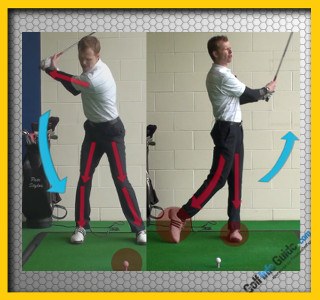
1. Fred Funk Fairway-Splitting Drives
Putting the ball in the fairway. is as much about the mental game as it is about your physical technique, so you need to make sure to get your mind in a good place. None of the tips below are particularly complicated or confusing, but they are important.
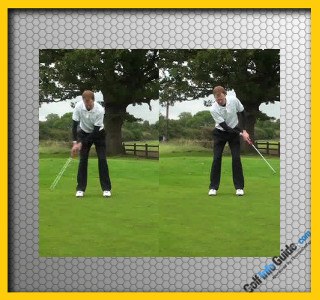
2. Ben Crenshaw Pure-Rolling Putts
So what can you do to keep your putting stroke as simple as possible? The following points are a great place to start.
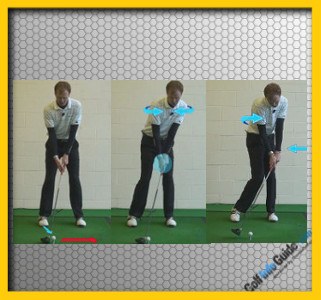
3. Gary Player and Corey Pavin Hot-Running Draw Shots
So what needs to be happening at impact in order to produce a low, running draw? The following points are key.
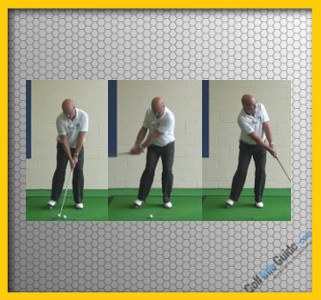
4. Tom Watson Delicate Chip from the Rough
To better understand everything that needs to be done prior to hitting this kind of delicate, downhill chip shot from the rough, please review the list of points below.
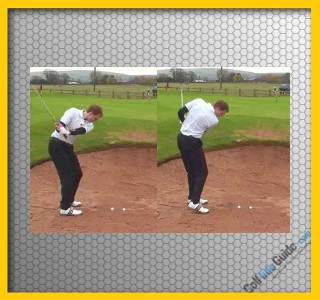
5. Seve Ballesteros Best Bunker Shots
For all his talent, Seve wasn’t born with otherworldly bunker skills; he developed them on the beach and, later, the golf course. The real lesson is that technique can only take you so far, especially in the short game. Experience through trial and error is the best teacher.
If your local course or practice facility has a practice bunker, immerse yourself in it. Devote at least 30 minutes of each visit to blasting out of different lies, hitting the ball different distances, varying the height of your shots, playing shots that spin and others that bounce and roll. Use your sand wedge, of course, but try clubs with less loft, too. You’ll be forced to change your stance, hand position and the angle of the clubface in order to get the ball out of the sand – and you’ll develop a feel that translates into every aspect of golf.
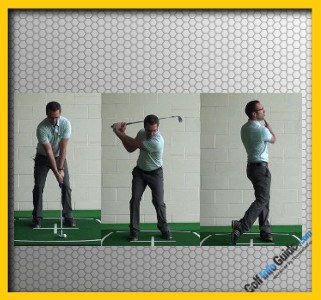
Before we get into the details on how to perform this challenging shot, we need to outline the circumstances that need to come together in order for you to even attempt a flop shot on the course. Only when you have all three of the points below in place should your mind consider the possibility of turning to the flop. If any of the three pieces of the puzzle below are missing, you should move on to figuring out what other option you can use to get the ball safely on the green.

7. Darren Clarke Knock-down Golf Shots
The basic steps are the same as a standard knock-down, with a couple extra points of emphasis. First, the setup:
Now for the swing:
One final thought: The old adage, “When it’s breezy, swing easy,” applies to Clarke’s knock-down technique just like any other. Take an extra club or two, make a smooth swing and the ball will fly lower than with a 100-percent swing using less club – every single time.
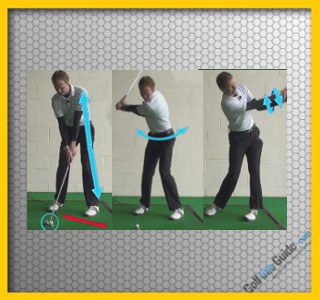
8. Bubba Watson Best Hook Shots
Few of us have Watson’s strength or manual facility, so it’s important to understand proper technique. The following guide is written for right-handers; lefties, simply reverse the instructions for the same effect.

9. Jack Nicklaus Best Power Fade Shots
So what constitutes a power fade? The following three elements should be present in your swing when you are hitting a power fade off the tee or from the fairway.
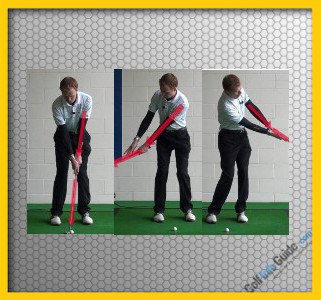
10. Raymond Floyd Best Chip Shots
By keeping it simple and limiting your focus to the three points on the list below, you should be able to quickly take a big step in the right direction.





